#custom ar/vr software development
Explore tagged Tumblr posts
Text

Experience GITEX Europe 2025: AI, Healthtech & Custom Software Development Solutions
Explore the future of Healthtech, AI, and custom software development at GITEX Europe 2025 in Berlin. Join 40,000+ tech leaders and discover cutting-edge innovations, including AR/VR, cybersecurity, cloud, and healthcare IT. Visit DreamSoft4u’s booth for next-gen software services and intelligent digital solutions.
#GITEX Europe 2025#custom software development#Healthtech#AI in healthcare#AI development services#healthcare IT solutions#DreamSoft4u#Messe Berlin tech expo#custom application development#software development company#XR technology#cybersecurity solutions#quantum computing#cloud computing#smart industries#tech expo Europe#digital transformation#software services#healthcare software development#generative AI#AR/VR in healthcare#sustainable tech#digital health solutions#custom healthcare software#AI-powered software#technology trends 2025
1 note
·
View note
Text
India's virtual reality (VR) landscape is rapidly evolving, with numerous companies leading the charge in innovative solutions and immersive experiences. Here’s a look at the top 10 VR companies making waves in the industry.
#Top VR Companies in India#Best VR Development Companies India#VR Solutions India#Immersive VR Companies India#Virtual Reality Training India#VR Game Development India#Enterprise VR Solutions India#Custom VR Development India#Augmented and Virtual Reality India#VR Content Creation India#Virtual Reality Startups India#VR Simulation Companies India#VR for Business India#Virtual Reality for Education India#Healthcare VR Solutions India#AR/VR Development India#VR for Industrial Training India#VR Software Development India#Virtual Reality Experience Design India#NextGen VR Companies India
0 notes
Text
ALTOS Technologies: Leading Web Development & IT Solutions in India
ALTOS Technologies provides comprehensive IT solutions including web development, mobile apps, AI, Python. With expertise in 3D modeling, digital marketing, and custom software development, we cater to businesses aiming for digital transformation.
#Web development#IT solutions#digital marketing#mobile app development#3D modeling#business automation#custom software#SEO#AR/VR solutions#tech consulting#enterprise solutions
1 note
·
View note
Text
#ar vr app development#blockchain app development#cloud application development#custom software development company#app development company#mobile app developer#best app development software#healthcare app developers#software development company#iot developers#largest app developers#internet of things app development#app building agency
0 notes
Text
The Metaverse: A New Frontier in Digital Interaction

The concept of the metaverse has captivated the imagination of technologists, futurists, and businesses alike. Envisioned as a collective virtual shared space, the metaverse merges physical and digital realities, offering immersive experiences and unprecedented opportunities for interaction, commerce, and creativity. This article delves into the metaverse, its potential impact on various sectors, the technologies driving its development, and notable projects shaping this emerging landscape.
What is the Metaverse?
The metaverse is a digital universe that encompasses virtual and augmented reality, providing a persistent, shared, and interactive online environment. In the metaverse, users can create avatars, interact with others, attend virtual events, own virtual property, and engage in economic activities. Unlike traditional online experiences, the metaverse aims to replicate and enhance the real world, offering seamless integration of the physical and digital realms.
Key Components of the Metaverse
Virtual Worlds: Virtual worlds are digital environments where users can explore, interact, and create. Platforms like Decentraland, Sandbox, and VRChat offer expansive virtual spaces where users can build, socialize, and participate in various activities.
Augmented Reality (AR): AR overlays digital information onto the real world, enhancing user experiences through devices like smartphones and AR glasses. Examples include Pokémon GO and AR navigation apps that blend digital content with physical surroundings.
Virtual Reality (VR): VR provides immersive experiences through headsets that transport users to fully digital environments. Companies like Oculus, HTC Vive, and Sony PlayStation VR are leading the way in developing advanced VR hardware and software.
Blockchain Technology: Blockchain plays a crucial role in the metaverse by enabling decentralized ownership, digital scarcity, and secure transactions. NFTs (Non-Fungible Tokens) and cryptocurrencies are integral to the metaverse economy, allowing users to buy, sell, and trade virtual assets.
Digital Economy: The metaverse features a robust digital economy where users can earn, spend, and invest in virtual goods and services. Virtual real estate, digital art, and in-game items are examples of assets that hold real-world value within the metaverse.
Potential Impact of the Metaverse
Social Interaction: The metaverse offers new ways for people to connect and interact, transcending geographical boundaries. Virtual events, social spaces, and collaborative environments provide opportunities for meaningful engagement and community building.
Entertainment and Gaming: The entertainment and gaming industries are poised to benefit significantly from the metaverse. Immersive games, virtual concerts, and interactive storytelling experiences offer new dimensions of engagement and creativity.
Education and Training: The metaverse has the potential to revolutionize education and training by providing immersive, interactive learning environments. Virtual classrooms, simulations, and collaborative projects can enhance educational outcomes and accessibility.
Commerce and Retail: Virtual shopping experiences and digital marketplaces enable businesses to reach global audiences in innovative ways. Brands can create virtual storefronts, offer unique digital products, and engage customers through immersive experiences.
Work and Collaboration: The metaverse can transform the future of work by providing virtual offices, meeting spaces, and collaborative tools. Remote work and global collaboration become more seamless and engaging in a fully digital environment.
Technologies Driving the Metaverse
5G Connectivity: High-speed, low-latency 5G networks are essential for delivering seamless and responsive metaverse experiences. Enhanced connectivity enables real-time interactions and high-quality streaming of immersive content.
Advanced Graphics and Computing: Powerful graphics processing units (GPUs) and cloud computing resources are crucial for rendering detailed virtual environments and supporting large-scale metaverse platforms.
Artificial Intelligence (AI): AI enhances the metaverse by enabling realistic avatars, intelligent virtual assistants, and dynamic content generation. AI-driven algorithms can personalize experiences and optimize virtual interactions.
Wearable Technology: Wearable devices, such as VR headsets, AR glasses, and haptic feedback suits, provide users with immersive and interactive experiences. Advancements in wearable technology are critical for enhancing the metaverse experience.
Notable Metaverse Projects
Decentraland: Decentraland is a decentralized virtual world where users can buy, sell, and develop virtual real estate as NFTs. The platform offers a wide range of experiences, from gaming and socializing to virtual commerce and education.
Sandbox: Sandbox is a virtual world that allows users to create, own, and monetize their gaming experiences using blockchain technology. The platform's user-generated content and virtual real estate model have attracted a vibrant community of creators and players.
Facebook's Meta: Facebook's rebranding to Meta underscores its commitment to building the metaverse. Meta aims to create interconnected virtual spaces for social interaction, work, and entertainment, leveraging its existing social media infrastructure.
Roblox: Roblox is an online platform that enables users to create and play games developed by other users. With its extensive user-generated content and virtual economy, Roblox exemplifies the potential of the metaverse in gaming and social interaction.
Sexy Meme Coin (SEXXXY): Sexy Meme Coin integrates metaverse elements by offering a decentralized marketplace for buying, selling, and trading memes as NFTs. This unique approach combines humor, creativity, and digital ownership, adding a distinct flavor to the metaverse landscape. Learn more about Sexy Meme Coin at Sexy Meme Coin.
The Future of the Metaverse
The metaverse is still in its early stages, but its potential to reshape digital interaction is immense. As technology advances and more industries explore its possibilities, the metaverse is likely to become an integral part of our daily lives. Collaboration between technology providers, content creators, and businesses will drive the development of the metaverse, creating new opportunities for innovation and growth.
Conclusion
The metaverse represents a new frontier in digital interaction, offering immersive and interconnected experiences that bridge the physical and digital worlds. With its potential to transform social interaction, entertainment, education, commerce, and work, the metaverse is poised to revolutionize various aspects of our lives. Notable projects like Decentraland, Sandbox, Meta, Roblox, and Sexy Meme Coin are at the forefront of this transformation, showcasing the diverse possibilities within this emerging digital universe.
For those interested in the playful and innovative side of the metaverse, Sexy Meme Coin offers a unique and entertaining platform. Visit Sexy Meme Coin to explore this exciting project and join the community.
274 notes
·
View notes
Text
AGARTHA Aİ - DEVASA+ (4)
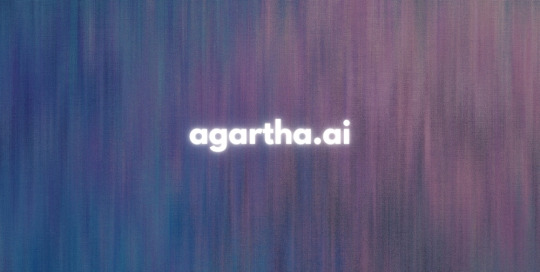
In an era where technology and creativity intertwine, AI design is revolutionizing the way we conceptualize and create across various industries. From the runway to retail, 3D fashion design is pushing boundaries, enabling designers to craft intricate garments with unparalleled precision. Likewise, 3D product design is transforming everything from gadgets to furniture, allowing for rapid prototyping and innovation. As we explore these exciting advancements, platforms like Agartha.ai are leading the charge in harnessing artificial intelligence to streamline the design process and inspire new ideas.
AI design
Artificial intelligence (AI) has revolutionized numerous industries, and the realm of design is no exception. By leveraging the power of machine learning and advanced algorithms, AI is transforming the way designers create, innovate, and deliver their products. AI-driven tools enable designers to harness vast amounts of data, allowing for more informed decision-making and streamlined workflows.
In the context of graphic design, AI can assist artists in generating ideas, creating unique visuals, and even automating repetitive tasks. For instance, programs powered by AI design can analyze trends and consumer preferences, producing designs that resonate with target audiences more effectively than traditional methods. This shift not only enhances creativity but also enables designers to focus on strategic thinking and ideation.
Moreover, AI is facilitating personalized design experiences. With the help of algorithms that analyze user behavior, products can be tailored to meet the specific needs and tastes of individuals. This level of customization fosters deeper connections between brands and consumers, ultimately driving customer satisfaction and loyalty in an increasingly competitive market.
3D fashion design
In recent years, 3D fashion design has revolutionized the way we create and visualize clothing. Using advanced software and tools, designers can create lifelike virtual garments that allow for innovative experimentation without the need for physical fabric. This trend has not only streamlined the design process but has also significantly reduced waste in the fashion industry.
Moreover, 3D fashion design enables designers to showcase their creations in a more interactive manner. By utilizing 3D modeling and rendering technologies, designers can present their collections in virtual environments, making it easier for clients and consumers to appreciate the nuances of each piece. This immersive experience also helps in gathering valuable feedback before producing the final product.
Furthermore, the integration of 3D fashion design with augmented reality (AR) and virtual reality (VR) technologies is bringing a fresh perspective to the industry. Consumers can virtually try on clothes from the comfort of their homes, thereby enhancing the shopping experience. As this field continues to evolve, it promises to bridge the gap between creativity and technology, paving the way for a sustainable and forward-thinking fashion future.
3D product design
3D product design has revolutionized the way we conceptualize and create products. With advanced software tools and technologies, designers can now create highly detailed and realistic prototypes that are not only visually appealing but also functional. This process allows for a quicker iteration of ideas, enabling designers to experiment with various styles and functionalities before arriving at the final design.
One of the significant advantages of 3D product design is the ability to visualize products in a virtual environment. Designers can see how their creations would look in real life, which is essential for understanding aesthetics and usability. Additionally, this technology enables manufacturers to identify potential issues in the design phase, reducing costs associated with prototype development and rework.
Moreover, the rise of 3D printing has further enhanced the significance of 3D product design. Designers can swiftly turn their digital models into tangible products, allowing for rapid prototyping and small-batch manufacturing. This agility not only speeds up the time-to-market for new products but also paves the way for more innovative designs that were previously impossible to execute.
Agartha.ai
Agartha.ai is a revolutionary platform that merges artificial intelligence with innovative design, creating a new avenue for designers and creators alike. With the rapid advancements in technology, Agartha.ai leverages AI to streamline various design processes, enabling users to produce unique and captivating designs with ease.
The platform provides tools that empower both emerging and established designers to explore the possibilities of AI design. By utilizing intelligent algorithms, Agartha.ai can assist in generating design options, ensuring that creativity is not hindered but enhanced. This results in a more efficient workflow and allows designers to focus on the conceptual aspects of their projects.
One of the standout features of Agartha.ai is its ability to adapt to different design disciplines, such as 3D fashion design and 3D product design. By supporting a broad spectrum of design fields, it positions itself as a versatile tool that meets the evolving needs of today's creative professionals. Whether it's crafting intricate fashion pieces or developing innovative product designs, Agartha.ai is at the forefront of the design revolution.
329 notes
·
View notes
Text
Top 10 Emerging Tech Trends to Watch in 2025
Technology is evolving at an unprecedented tempo, shaping industries, economies, and day by day lifestyles. As we method 2025, several contemporary technology are set to redefine how we engage with the sector. From synthetic intelligence to quantum computing, here are the important thing emerging tech developments to look at in 2025.

Top 10 Emerging Tech Trends In 2025
1. Artificial Intelligence (AI) Evolution
AI remains a dominant force in technological advancement. By 2025, we will see AI turning into greater sophisticated and deeply incorporated into corporations and personal programs. Key tendencies include:
Generative AI: AI fashions like ChatGPT and DALL·E will strengthen similarly, generating more human-like textual content, images, and even films.
AI-Powered Automation: Companies will more and more depend upon AI-pushed automation for customer support, content material advent, and even software development.
Explainable AI (XAI): Transparency in AI decision-making becomes a priority, ensuring AI is greater trustworthy and comprehensible.
AI in Healthcare: From diagnosing sicknesses to robot surgeries, AI will revolutionize healthcare, reducing errors and improving affected person results.
2. Quantum Computing Breakthroughs
Quantum computing is transitioning from theoretical studies to real-global packages. In 2025, we will expect:
More powerful quantum processors: Companies like Google, IBM, and startups like IonQ are making full-size strides in quantum hardware.
Quantum AI: Combining quantum computing with AI will enhance machine studying fashions, making them exponentially quicker.
Commercial Quantum Applications: Industries like logistics, prescribed drugs, and cryptography will begin leveraging quantum computing for fixing complex troubles that traditional computer systems can not manage successfully.
3. The Rise of Web3 and Decentralization
The evolution of the net continues with Web3, emphasizing decentralization, blockchain, and user possession. Key factors consist of:
Decentralized Finance (DeFi): More economic services will shift to decentralized platforms, putting off intermediaries.
Non-Fungible Tokens (NFTs) Beyond Art: NFTs will find utility in actual estate, gaming, and highbrow belongings.
Decentralized Autonomous Organizations (DAOs): These blockchain-powered organizations will revolutionize governance systems, making choice-making more obvious and democratic.
Metaverse Integration: Web3 will further integrate with the metaverse, allowing secure and decentralized digital environments.
4. Extended Reality (XR) and the Metaverse
Virtual Reality (VR), Augmented Reality (AR), and Mixed Reality (MR) will retain to improve, making the metaverse extra immersive. Key tendencies consist of:
Lighter, More Affordable AR/VR Devices: Companies like Apple, Meta, and Microsoft are working on more accessible and cushty wearable generation.
Enterprise Use Cases: Businesses will use AR/VR for far flung paintings, education, and collaboration, lowering the want for physical office spaces.
Metaverse Economy Growth: Digital belongings, digital real estate, and immersive studies will gain traction, driven via blockchain technology.
AI-Generated Virtual Worlds: AI will play a role in developing dynamic, interactive, and ever-evolving virtual landscapes.
5. Sustainable and Green Technology
With growing concerns over weather alternate, generation will play a vital function in sustainability. Some key innovations include:
Carbon Capture and Storage (CCS): New techniques will emerge to seize and keep carbon emissions efficaciously.
Smart Grids and Renewable Energy Integration: AI-powered clever grids will optimize power distribution and consumption.
Electric Vehicle (EV) Advancements: Battery generation upgrades will cause longer-lasting, faster-charging EVs.
Biodegradable Electronics: The upward thrust of green digital additives will assist lessen e-waste.
6. Biotechnology and Personalized Medicine
Healthcare is present process a metamorphosis with biotech improvements. By 2025, we expect:
Gene Editing and CRISPR Advances: Breakthroughs in gene modifying will enable treatments for genetic disorders.
Personalized Medicine: AI and big statistics will tailor remedies based on man or woman genetic profiles.
Lab-Grown Organs and Tissues: Scientists will make in addition progress in 3D-published organs and tissue engineering.
Wearable Health Monitors: More superior wearables will music fitness metrics in actual-time, presenting early warnings for illnesses.
7. Edge Computing and 5G Expansion
The developing call for for real-time statistics processing will push aspect computing to the vanguard. In 2025, we will see:
Faster 5G Networks: Global 5G insurance will increase, enabling excessive-velocity, low-latency verbal exchange.
Edge AI Processing: AI algorithms will system information in the direction of the source, reducing the want for centralized cloud computing.
Industrial IoT (IIoT) Growth: Factories, deliver chains, and logistics will advantage from real-time facts analytics and automation.
Eight. Cybersecurity and Privacy Enhancements
With the upward thrust of AI, quantum computing, and Web3, cybersecurity will become even more essential. Expect:
AI-Driven Cybersecurity: AI will come across and prevent cyber threats extra effectively than traditional methods.
Zero Trust Security Models: Organizations will undertake stricter get right of entry to controls, assuming no entity is inherently sincere.
Quantum-Resistant Cryptography: As quantum computer systems turn out to be greater effective, encryption techniques will evolve to counter potential threats.
Biometric Authentication: More structures will rely on facial reputation, retina scans, and behavioral biometrics.
9. Robotics and Automation
Automation will hold to disrupt numerous industries. By 2025, key trends encompass:
Humanoid Robots: Companies like Tesla and Boston Dynamics are growing robots for commercial and family use.
AI-Powered Supply Chains: Robotics will streamline logistics and warehouse operations.
Autonomous Vehicles: Self-using automobiles, trucks, and drones will become greater not unusual in transportation and shipping offerings.
10. Space Exploration and Commercialization
Space era is advancing swiftly, with governments and private groups pushing the boundaries. Trends in 2025 include:
Lunar and Mars Missions: NASA, SpaceX, and other groups will development of their missions to establish lunar bases.
Space Tourism: Companies like Blue Origin and Virgin Galactic will make industrial area travel more reachable.
Asteroid Mining: Early-level research and experiments in asteroid mining will start, aiming to extract rare materials from area.
2 notes
·
View notes
Text
How-To IT
Topic: Core areas of IT
1. Hardware
• Computers (Desktops, Laptops, Workstations)
• Servers and Data Centers
• Networking Devices (Routers, Switches, Modems)
• Storage Devices (HDDs, SSDs, NAS)
• Peripheral Devices (Printers, Scanners, Monitors)
2. Software
• Operating Systems (Windows, Linux, macOS)
• Application Software (Office Suites, ERP, CRM)
• Development Software (IDEs, Code Libraries, APIs)
• Middleware (Integration Tools)
• Security Software (Antivirus, Firewalls, SIEM)
3. Networking and Telecommunications
• LAN/WAN Infrastructure
• Wireless Networking (Wi-Fi, 5G)
• VPNs (Virtual Private Networks)
• Communication Systems (VoIP, Email Servers)
• Internet Services
4. Data Management
• Databases (SQL, NoSQL)
• Data Warehousing
• Big Data Technologies (Hadoop, Spark)
• Backup and Recovery Systems
• Data Integration Tools
5. Cybersecurity
• Network Security
• Endpoint Protection
• Identity and Access Management (IAM)
• Threat Detection and Incident Response
• Encryption and Data Privacy
6. Software Development
• Front-End Development (UI/UX Design)
• Back-End Development
• DevOps and CI/CD Pipelines
• Mobile App Development
• Cloud-Native Development
7. Cloud Computing
• Infrastructure as a Service (IaaS)
• Platform as a Service (PaaS)
• Software as a Service (SaaS)
• Serverless Computing
• Cloud Storage and Management
8. IT Support and Services
• Help Desk Support
• IT Service Management (ITSM)
• System Administration
• Hardware and Software Troubleshooting
• End-User Training
9. Artificial Intelligence and Machine Learning
• AI Algorithms and Frameworks
• Natural Language Processing (NLP)
• Computer Vision
• Robotics
• Predictive Analytics
10. Business Intelligence and Analytics
• Reporting Tools (Tableau, Power BI)
• Data Visualization
• Business Analytics Platforms
• Predictive Modeling
11. Internet of Things (IoT)
• IoT Devices and Sensors
• IoT Platforms
• Edge Computing
• Smart Systems (Homes, Cities, Vehicles)
12. Enterprise Systems
• Enterprise Resource Planning (ERP)
• Customer Relationship Management (CRM)
• Human Resource Management Systems (HRMS)
• Supply Chain Management Systems
13. IT Governance and Compliance
• ITIL (Information Technology Infrastructure Library)
• COBIT (Control Objectives for Information Technologies)
• ISO/IEC Standards
• Regulatory Compliance (GDPR, HIPAA, SOX)
14. Emerging Technologies
• Blockchain
• Quantum Computing
• Augmented Reality (AR) and Virtual Reality (VR)
• 3D Printing
• Digital Twins
15. IT Project Management
• Agile, Scrum, and Kanban
• Waterfall Methodology
• Resource Allocation
• Risk Management
16. IT Infrastructure
• Data Centers
• Virtualization (VMware, Hyper-V)
• Disaster Recovery Planning
• Load Balancing
17. IT Education and Certifications
• Vendor Certifications (Microsoft, Cisco, AWS)
• Training and Development Programs
• Online Learning Platforms
18. IT Operations and Monitoring
• Performance Monitoring (APM, Network Monitoring)
• IT Asset Management
• Event and Incident Management
19. Software Testing
• Manual Testing: Human testers evaluate software by executing test cases without using automation tools.
• Automated Testing: Use of testing tools (e.g., Selenium, JUnit) to run automated scripts and check software behavior.
• Functional Testing: Validating that the software performs its intended functions.
• Non-Functional Testing: Assessing non-functional aspects such as performance, usability, and security.
• Unit Testing: Testing individual components or units of code for correctness.
• Integration Testing: Ensuring that different modules or systems work together as expected.
• System Testing: Verifying the complete software system’s behavior against requirements.
• Acceptance Testing: Conducting tests to confirm that the software meets business requirements (including UAT - User Acceptance Testing).
• Regression Testing: Ensuring that new changes or features do not negatively affect existing functionalities.
• Performance Testing: Testing software performance under various conditions (load, stress, scalability).
• Security Testing: Identifying vulnerabilities and assessing the software’s ability to protect data.
• Compatibility Testing: Ensuring the software works on different operating systems, browsers, or devices.
• Continuous Testing: Integrating testing into the development lifecycle to provide quick feedback and minimize bugs.
• Test Automation Frameworks: Tools and structures used to automate testing processes (e.g., TestNG, Appium).
19. VoIP (Voice over IP)
VoIP Protocols & Standards
• SIP (Session Initiation Protocol)
• H.323
• RTP (Real-Time Transport Protocol)
• MGCP (Media Gateway Control Protocol)
VoIP Hardware
• IP Phones (Desk Phones, Mobile Clients)
• VoIP Gateways
• Analog Telephone Adapters (ATAs)
• VoIP Servers
• Network Switches/ Routers for VoIP
VoIP Software
• Softphones (e.g., Zoiper, X-Lite)
• PBX (Private Branch Exchange) Systems
• VoIP Management Software
• Call Center Solutions (e.g., Asterisk, 3CX)
VoIP Network Infrastructure
• Quality of Service (QoS) Configuration
• VPNs (Virtual Private Networks) for VoIP
• VoIP Traffic Shaping & Bandwidth Management
• Firewall and Security Configurations for VoIP
• Network Monitoring & Optimization Tools
VoIP Security
• Encryption (SRTP, TLS)
• Authentication and Authorization
• Firewall & Intrusion Detection Systems
• VoIP Fraud DetectionVoIP Providers
• Hosted VoIP Services (e.g., RingCentral, Vonage)
• SIP Trunking Providers
• PBX Hosting & Managed Services
VoIP Quality and Testing
• Call Quality Monitoring
• Latency, Jitter, and Packet Loss Testing
• VoIP Performance Metrics and Reporting Tools
• User Acceptance Testing (UAT) for VoIP Systems
Integration with Other Systems
• CRM Integration (e.g., Salesforce with VoIP)
• Unified Communications (UC) Solutions
• Contact Center Integration
• Email, Chat, and Video Communication Integration
2 notes
·
View notes
Text
IT companies in Coimbatore :Hiring freshers role and benefit
Coimbatore has emerged as a preferred location for IT professionals due to its affordable cost of living, high-quality educational institutions, and the city’s well-developed infrastructure. Unlike metropolitan cities, IT companies in Coimbatore offers a balanced lifestyle with a lower cost of living, which appeals to many working professionals. With a pool of skilled talent graduating from nearby engineering and technical institutions, Coimbatore is an ideal place for IT companies to find qualified candidates for various roles, making it a hot spot for job seekers.

Who Are the Leading IT Companies in Coimbatore?
The city hosts several top IT companies, including Tata Consultancy Services (TCS), Cognizant, Wipro, and Robert Bosch, along with growing regional players like KGISL and Aspire Systems. These companies offer a variety of services from software development to business consulting and automation solutions. Working with such companies not only provides a chance to learn and grow but also adds credibility to one's career profile. Their well-established infrastructure and focus on training employees make them attractive employers in the region.
Best IT Companies in Coimbatore :
Coimbatore, one of Tamil Nadu's major industrial hubs, has seen significant growth in the IT sector. Known for its skilled workforce, affordable infrastructure, and a supportive business ecosystem, the city hosts many IT companies that offer a wide range of services from software development to digital transformation.
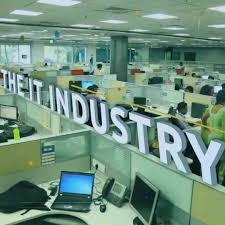
Here’s a look at some of the best IT company in Coimbatore :
Accenture :

Global consulting and technology services company providing full-fledged IT and business process services.
ThoughtWorks:

Leaders in software consultancy to get custom software developed through agile methodology and digital transformation
Payoda Technologies :

focuses primarily on aspects of digital transformation, analytics, cloud solution development and software development.
Sridhar Vembu Institute of Technology (Zoho Corp) :
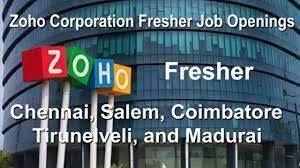
It is based in Chennai; however, the innovation and research wing of Zoho is based in Coimbatore, where it works on software product development.
Softratech Info :
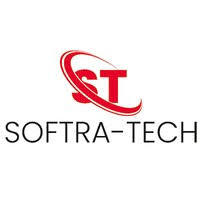
The company provides IT solutions, consultancy, software development, and support services.
Repute Network :

A technology-based company, focusing on digital payments, financial technologies, and blockchain solutions
Mindnotix Technologies :
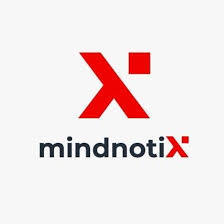
A technology firm, developing web and mobile applications as well as AR/VR-based applications, and AI-driven applications.
Kumaraguru College of Technology :

Technology Business Incubator (KCT-TBI) - Incubates start-ups and tech innovation in IoT, AI, robotics, and software solutions.
Revature India :

Trains and develops software services and products, focusing on creating technical talent for the global market.
i2i Software Solutions :

Offers end-to-end software solutions and IT services, with a focus on custom development.
eQuadriga Software Pvt Ltd :

is an IT services company focusing on software development, mobile apps, and digital marketing.
Conclusion :
Coimbatore’s IT sector is full of opportunities for freshers, thanks to a supportive ecosystem of companies and a growing tech community. From MNCs like Cognizant and Bosch to dynamic startups, IT companies in Coimbatore provides ample options for fresh graduates eager to kickstart their careers. With a focus on learning, networking, and skill development, freshers can build a promising career in this thriving city.
#it company#IT companies in Coimbatore#internship#freshers it job#jobseekers#jobs#employment#careers#workplace#inside job
3 notes
·
View notes
Text

Open-source Tools and Scripts for XMLTV Data
XMLTV is a popular format for storing TV listings. It is widely used by media centers, TV guide providers, and software applications to display program schedules. Open-source tools and scripts play a vital role in managing and manipulating XMLTV data, offering flexibility and customization options for users.
In this blog post, we will explore some of the prominent open-source tools and scripts available for working with xmltv examples.
What is XMLTV?
XMLTV is a set of software tools that helps to manage TV listings stored in the XML format. It provides a standard way to describe TV schedules, allowing for easy integration with various applications and services. XMLTV files contain information about program start times, end times, titles, descriptions, and other relevant metadata.
Open-source Tools and Scripts for XMLTV Data
1. EPG Best
EPG Best is an open-source project that provides a set of utilities to obtain, manipulate, and display TV listings. It includes tools for grabbing listings from various sources, customizing the data, and exporting it in different formats. Epg Best offers a flexible and extensible framework for managing XMLTV data.
2. TVHeadend
TVHeadend is an open-source TV streaming server and digital video recorder for Linux. It supports various TV tuner hardware and provides a web interface for managing TV listings. TVHeadend includes built-in support for importing and processing XMLTV data, making it a powerful tool for organizing and streaming TV content.
3. WebGrab+Plus
WebGrab+Plus is a popular open-source tool for grabbing electronic program guide (EPG) data from websites and converting it into XMLTV format. It supports a wide range of sources and provides extensive customization options for configuring channel mappings and data extraction rules. WebGrab+Plus is widely used in conjunction with media center software and IPTV platforms.
4. XMLTV-Perl
XMLTV-Perl is a collection of Perl modules and scripts for processing XMLTV data. It provides a rich set of APIs for parsing, manipulating, and generating XMLTV files. XMLTV-Perl is particularly useful for developers and system administrators who need to work with XMLTV data in their Perl applications or scripts.
5. XMLTV GUI
XMLTV GUI is an open-source graphical user interface for configuring and managing XMLTV grabbers. It simplifies the process of setting up grabber configurations, scheduling updates, and viewing the retrieved TV listings.
XMLTV GUI is a user-friendly tool for users who prefer a visual interface for interacting with XMLTV data.
Open-source tools and scripts for XMLTV data offer a wealth of options for managing and utilizing TV listings in XML format. Whether you are a media enthusiast, a system administrator, or a developer, these tools provide the flexibility and customization needed to work with TV schedules effectively.
By leveraging open-source solutions, users can integrate XMLTV data into their applications, media centers, and services with ease.
Stay tuned with us for more insights into open-source technologies and their applications!

Step-by-Step XMLTV Configuration for Extended Reality
Extended reality (XR) has become an increasingly popular technology, encompassing virtual reality (VR), augmented reality (AR), and mixed reality (MR).
One of the key components of creating immersive XR experiences is the use of XMLTV data for integrating live TV listings and scheduling information into XR applications. In this blog post, we will provide a step-by-step guide to configuring XMLTV for extended reality applications.
What is XMLTV?
XMLTV is a set of utilities and libraries for managing TV listings stored in the XML format. It provides a standardized format for TV scheduling information, including program start times, end times, titles, descriptions, and more. This data can be used to populate electronic program guides (EPGs) and other TV-related applications.
Why Use XMLTV for XR?
Integrating XMLTV data into XR applications allows developers to create immersive experiences that incorporate live TV scheduling information. Whether it's displaying real-time TV listings within a virtual environment or overlaying TV show schedules onto the real world in AR, XMLTV can enrich XR experiences by providing users with up-to-date programming information.
Step-by-Step XMLTV Configuration for XR
Step 1: Obtain XMLTV Data
The first step in configuring XMLTV for XR is to obtain the XMLTV data source. There are several sources for XMLTV data, including commercial providers and open-source projects. Choose a reliable source that provides the TV listings and scheduling information relevant to your target audience and region.
Step 2: Install XMLTV Utilities
Once you have obtained the XMLTV data, you will need to install the XMLTV utilities on your development environment. XMLTV provides a set of command-line tools for processing and manipulating TV listings in XML format. These tools will be essential for parsing the XMLTV data and preparing it for integration into your XR application.
Step 3: Parse XMLTV Data
Use the XMLTV utilities to parse the XMLTV data and extract the relevant scheduling information that you want to display in your XR application. This may involve filtering the data based on specific channels, dates, or genres to tailor the TV listings to the needs of your XR experience.
Step 4: Integrate XMLTV Data into XR Application
With the parsed XMLTV data in hand, you can now integrate it into your XR application. Depending on the XR platform you are developing for (e.g., VR headsets, AR glasses), you will need to leverage the platform's development tools and APIs to display the TV listings within the XR environment.
Step 5: Update XMLTV Data
Finally, it's crucial to regularly update the XMLTV data in your XR application to ensure that the TV listings remain current and accurate. Set up a process for fetching and refreshing the XMLTV data at regular intervals to reflect any changes in the TV schedule.
Incorporating XMLTV data into extended reality applications can significantly enhance the immersive and interactive nature of XR experiences. By following the step-by-step guide outlined in this blog post, developers can seamlessly configure XMLTV for XR and create compelling XR applications that seamlessly integrate live TV scheduling information.
Stay tuned for more XR development tips and tutorials!
Visit our xmltv information blog and discover how these advancements are shaping the IPTV landscape and what they mean for viewers and content creators alike. Get ready to understand the exciting innovations that are just around the corner.
youtube
4 notes
·
View notes
Text
What is the future of Metaverse in Online Gaming Industry

As we enter a new digital era, the concept of the Metaverse is becoming a cornerstone of innovation within the online gaming industry. Nearly hundreds of millions of virtual reality products are expected to be in use in the next 5 years and almost 154 were counted in the first quarter of this year. Let's explore the future of the Metaverse and highlight software company's groundbreaking contributions to this dynamic landscape.
What is Metaverse in the gaming industry?
A virtual universe where players can engage, create, and socialize, the Metaverse offers limitless possibilities for both gamers and developers. Many companies contribute to this evolution, one among them is BSEtec - A leading blockchain software development company whose vision and technology are shaping the future of online gaming.
Is it a New Era of Digital Interaction? Yes, The Metaverse makes digital interactions which promises to redefine how players interact with digital worlds and one another. Through virtual reality (VR), augmented reality (AR), and artificial intelligence (AI), the gaming experience is becoming more immersive and interconnected than ever before recognize the importance of these technologies in creating a vibrant Metaverse, committing itself to harnessing these advancements to enhance user experience.
How does BSEtec make its technological Innovation?
BSEtec is at the forefront of integrating advanced technologies into the gaming experience. has built applications using VR and AR, and they have been customized when required to create environments that feel alive and interactive. Players can expect stunning graphics, realistic physics, and seamless experiences that blur the lines between reality and digital existence.
The future of the Metaverse will likely see an increased focus on interconnectivity between different games and platforms. The player will be able to traverse various games and worlds seamlessly. This cross-platform functionality will allow characters, assets, and achievements to be used across multiple games, creating a cohesive ecosystem that enhances player engagement and retention which can be developed as a web and mobile app.
Enhancing Social Interactions is a central pillar of the Metaverse. aims to improve this aspect by developing social gaming platforms facilitating seamless communication and collaboration among players. Enabling dynamic in-game interactions and fostering communal events, ensures that social experiences are rich and meaningful. Gamers will not only connect with friends but also forge monetization with ad-mob as well as onboarding into many influencers as entrepreneurs, which in other terms as Play-to-Earn Models invokes Economic Opportunities.
BSEtec is actively exploring the integration of cryptocurrency and non-fungible tokens (NFTs) into its gaming platforms namely mint trades, allowing players to earn real-world value from their in-game activities. This transition enables a new economic framework within the Metaverse, incentivizing players to engage, compete, and collaborate. Overall, The future of the Metaverse in the online gaming industry is bright and filled with exhilarating possibilities that will redefine how we play, connect, and create. BSEtec as one of the leading companies looks up a charge in this transformative journey, contributing innovative technologies, getting connected with their blockchain engineers, and embracing Metaverse, it can look forward to an enriched gaming experience that transcends boundaries and brings players together like never before.
2 notes
·
View notes
Text
India's virtual reality landscape is thriving, with several companies leading the charge in innovation and immersive experiences. Here’s a list of notable VR companies, including Simulanis Solutions:
#VR Development Companies India#Virtual Reality Solutions India#Top VR Companies India#VR App Development India#Immersive VR Technologies India#Virtual Reality for Training India#AR/VR Companies India#VR Content Creation India#Best VR Companies in India#VR Game Development India#Virtual Reality Startups India#VR Simulations India#VR Software Development India#VR Experience Design India#Enterprise VR Solutions India#VR for Education India#Custom VR Solutions India#Healthcare VR Companies India#Interactive VR Solutions India#Virtual Reality Services India
0 notes
Text
Interactive touch screen display app development company Hyderabad
Audience Engagement: Explore the best Interactive touchscreen display app development company If you want to engage your audience with the best of the latest technology, you must look for a professional interactive touchscreen display app development company. Digital transformation is steadily expanding with the emergence of advanced and innovative technologies and AI-driven solutions. For businesses looking to enhance their customer experience, interactive touchscreens provide an engaging and innovative solution.

Among the trailblazers in this domain, Digital Eyecon stands as the professional and innovative interactive display software development company providing the best in-class touchscreen display apps.
A touchscreen is an LCD device that can receive input signals when touching graphic buttons on the screen. The feedback system on the screen drives various connected devices according to the pre-programmed program and creates vivid audio and video through the LCD screen. The dynamic touchscreens captivate the audience through animations and targeted content. The interactive content will engage, educate the audience, and help them with the self-serve experience.
Key features of Interactive display apps
Interactivity – These apps facilitate the presentation of information in a captivating and interactive manner.
User-friendly designs – The features are easy to navigate and ensure visitors of all ages can use it effortlessly.
Innovative – These apps are beyond traditional displays, as they use innovative visual techniques offering an immersive experience to the user.
Here are a few points to look for while choosing the best interactive display software development company in India.
Innovative UI designs – User interface design plays a crucial role in touchscreen apps. It ensures an engaging user experience.
Augmented Reality integration – The integration of immersive technologies takes user experience to a new level. Companies with expertise in AR, and VR can create more engaging touchscreen apps that stand out in the market.
Regular support – A reliable interactive display software development company will provide ongoing support and updates, keeping up with advancements in technology and security standards.

Interactive display apps have become necessary tools in various sectors from education to business. These devices create dynamic and user-friendly interfaces for effective engagement and communication. Digital Eyecon’s team of skilled developers combines technical expertise with a passion for innovation, ensuring the best solutions are in tune with industry trends. Digital Eyecon has left an indelible mark by delivering pioneering touchscreen applications and AR apps tailored for museums and tourist places. The remarkable success of these apps has brought positive feedback, solidifying Digital Eyecon’s position as the best interactive touchscreen display app development company.
As technology continues to evolve, Digital Eyecon brings the best of interactive experiences to diverse businesses and budget needs. With a track record of success, the company is a trusted partner for businesses seeking to elevate their visitor/audience experience through the latest technology. Check for more information at https://digitaleyecon.com/services/interactive-touchscreen-display-app-development-company/
youtube
Interactive touchscreen apps have revolutionized the way businesses engage with their customers. These apps are highly beneficial in creating dynamic experiences and providing a bridge between businesses and their target audience. Interactive touchscreens are all about creating an unforgettable experience that resonates with
the audience. So, choose a company that understands innovation and is committed to delivering the best so your business stands out in the digital landscape.
#interactive touchscreen#app development#web designing company in hyderabad#web designers in hyderabad#digital marketing company in hyderabad#Youtube
2 notes
·
View notes
Text
Top 10 Mobile App Development Companies in Gurgaon | Top 10 Company 2023

Gurgaon, often referred to as the "Millennium City," is a hub of technological innovation in India. The city is home to numerous software development companies, including some of the best in mobile app development. If you're on the lookout for a trusted mobile app development partner in Gurgaon, you're in the right place. We've curated a list of the top 10 mobile app development companies in Gurgaon to help you make an informed decision.
1. Antino Labs
Antino Labs is a prominent player in the Gurgaon mobile app development scene. They offer end-to-end app development services, including design, development, and deployment. With a focus on user-centric design and robust functionality, Antino Labs has gained recognition for delivering high-quality mobile solutions. Website: https://www.antino.com/
2. Rajmith
Rajmith is a well-established mobile app development company known for its commitment to excellence. They specialize in crafting custom mobile apps that cater to diverse industry needs. Rajmith portfolio boasts a wide range of successful projects, making them a trusted choice for businesses seeking innovative mobile solutions. Website: https://www.rajmith.com/
3. Yuasa Software Labs
Yugasa Software Labs is a dynamic player in the mobile app development arena. They are renowned for their expertise in developing mobile apps for various platforms, including iOS and Android. Yugasa focus on quality and innovation has earned them a reputation as a go-to choice for businesses looking to transform their ideas into reality. Website: https://yugasa.com/
4. Quytech
Quytech is a name synonymous with cutting-edge technology solutions. They are known for their expertise in augmented reality (AR) and virtual reality (VR) app development. Quytech's commitment to pushing the boundaries of innovation has positioned them as leaders in the emerging technology space. Website: https://www.quytech.com/
5. Orange Mantra
Orange Mantra is a trusted partner for businesses seeking mobile app development services. Their team of skilled developers and designers collaborates to create engaging and user-friendly mobile applications. Orange Mantra's client-centric approach sets them apart in the competitive app development landscape. Website: https://www.orangemantra.com/
6. Infodart Technologies Pvt. Ltd.
Infodart Technologies is a global player with a strong presence in Gurgaon. They offer end-to-end mobile app development services, along with consulting and digital transformation solutions. Infodart ability to deliver complex projects with precision has earned them accolades from clients worldwide. Website: https://www.infodartglobal.com/
7. Infosys Infosys, a global tech giant, has a significant presence in Gurgaon. While they are known for their diverse array of services, mobile app development is a notable part of their portfolio. Infosys leverages its vast resources and expertise to deliver comprehensive mobile solutions to clients across industries. Website: https://www.infosys.com/
8. Wama Wama Technology is a rising star in Gurgaon's mobile app development landscape. They specialize in crafting mobile apps that offer seamless user experiences. Wama Technology's commitment to staying updated with the latest industry trends positions them as innovators in the field. Website: http://www.wamatechnology.com/
9. Tata Consultancy Services (TCS) Tata Consultancy Services, a global IT services giant, has a significant presence in Gurgaon. They offer a wide range of technology services, including mobile app development. TCS leverages its extensive experience and resources to provide scalable and robust mobile solutions to clients worldwide. Website: https://www.tcs.com/
10. Mobibiz Mobibiz is a Gurgaon-based mobile app development company known for its focus on user-centric design and functionality. They cater to a diverse clientele and have a strong track record of delivering successful mobile solutions. Website: https://www.mobibiz.in/
In conclusion, Gurgaon boasts a thriving ecosystem of top-notch mobile app development companies. Whether you're a startup with an innovative app idea or an established enterprise looking to enhance your digital presence, these companies have the expertise to turn your vision into a reality. It's important to conduct thorough research and select the company that aligns best with your specific requirements. With the right mobile app development partner, you can transform your app dreams into a successful reality and drive your business to new heights. Related: Pioneering Mobile App Development in Gurugram Delhi NCR
2 notes
·
View notes
Text
Advantal Technologies - Web Development Company
Advantal Technologies is a software solutions company known for empowering businesses with innovative technological solutions to become market leaders. We offer custom software solutions, enterprise mobility solutions, UI/UX designing, IT Consulting, project management, manpower outsourcing, mobile application development and secure communication products. For inquiries, please send us an email at [email protected] For more info, please visit www.advantaltechnologies.com
youtube
#ar vr app development#blockchain app development#cloud application development#custom software development company#app development company#mobile app developer#best app development software#healthcare app developers#software development company#iot developers#largest app developers#internet of things app development#app building agency#coding#devlog#artificial intelligence#html#machine learning#programming#python#linux#Youtube
1 note
·
View note
Text
Unlock Growth with Custom Mobile App Development Services in Bangalore
In an increasingly digitized global economy, businesses are under growing pressure to adopt solutions that enhance efficiency, personalization, and customer engagement. One of the most effective strategies in achieving these goals is investing in custom mobile app development services in Bangalore. As businesses evolve and user expectations rise, customized applications provide the flexibility and innovation needed to stay ahead in a competitive marketplace.
Understanding the Shift Toward Custom Mobile Applications
Traditional, off-the-shelf mobile applications often fall short of meeting the specific needs of modern organizations. These generic solutions may offer a wide range of features, but they rarely align perfectly with a company’s internal processes or customer interaction models. In contrast, custom application development services in Bangalore are tailored to support business-specific workflows, branding requirements, and user experiences.
By developing mobile apps that are specifically built to meet defined objectives, companies gain greater control over functionality, scalability, and user engagement. Whether it's for e-commerce, healthcare, education, logistics, or finance, custom mobile applications empower businesses to operate more efficiently and serve their customers more effectively.
Why Bangalore is the Preferred Destination for Custom App Development
Bangalore, widely recognized as India’s technological hub, stands out as a leading destination for businesses seeking reliable and advanced mobile app development services. The city hosts a vast ecosystem of experienced software developers, creative UI/UX designers, and forward-thinking engineers.
Moreover, the integration of emerging technologies—such as artificial intelligence (AI), machine learning, augmented reality (AR), virtual reality (VR), and cloud computing—is a standard practice among firms offering custom mobile app development services in Bangalore. The cost-effectiveness of these services compared to their Western counterparts also makes Bangalore an attractive option for startups, SMEs, and large enterprises alike.
Accessibility: A Strategic Component of Custom App Development
Accessibility is an increasingly important consideration in mobile app design. A well-developed mobile app must cater to users across a spectrum of physical and cognitive abilities. Unfortunately, accessibility is often overlooked in standard application development.
Custom-built mobile applications offer the flexibility to incorporate inclusive design elements such as screen reader compatibility, high-contrast interfaces, large interactive elements, and voice-based navigation. By leveraging custom mobile app development services in Bangalore, businesses can ensure their apps are not only user-friendly but also compliant with international accessibility standards. This inclusive approach extends the app’s reach and reinforces a company’s commitment to user-centric design.
Key Benefits of Investing in Custom Mobile App Development
Businesses that invest in custom mobile applications stand to benefit from a wide array of advantages:
Tailored Functionalities: Applications are designed based on precise business requirements and user personas, ensuring relevance and usability.
Scalability: Custom apps are future-ready and designed to scale with business growth, supporting new features and integrations without disruption.
Enhanced Security: With increasing cyber threats, security cannot be an afterthought. Custom applications can be developed with industry-specific security protocols, significantly reducing vulnerabilities.
Seamless Integration: These applications can be easily integrated with existing enterprise systems, including CRMs, ERPs, and third-party APIs, enhancing operational efficiency.
Superior User Experience: The app interface and user journey are designed with the target audience in mind, offering a more intuitive and engaging experience.
Conclusion
In today’s digital-first landscape, adopting custom mobile app development services in Bangalore is not merely an option—it is a strategic imperative. As businesses seek smarter, scalable, and more inclusive solutions, customized mobile apps offer the performance and flexibility necessary to meet evolving market demands.
By partnering with a reliable custom mobile app development company in Bangalore, organizations can leverage advanced technologies, experienced talent, and a culture of innovation to transform ideas into powerful digital tools. Whether the goal is increased efficiency, better user engagement, or future-readiness, the path forward begins with a custom solution tailored to your business.
#mobileappdevelopmentcompaniesinbangalore#bestmobileappdevelopmentcompanyinbangalore#customappdevelopment#mobileappexpertsbangalore#mobileappdevelopmentcompanyinbangalore#mobileapplicationdevelopment#5inewebsolution#appdevelopmentbangalore#bangaloretech
0 notes